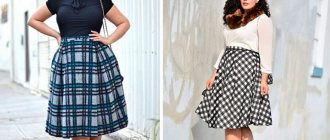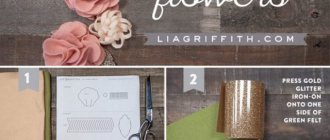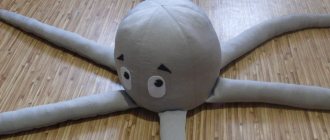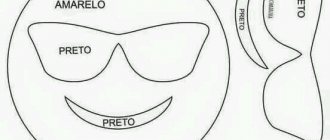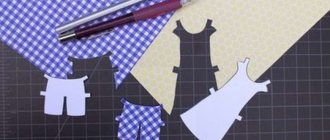When learning sewing, you will eventually need to learn how to sew skirts yourself. There are several options for simple and completely uncomplicated sewing, even for a novice seamstress. Before you start work, you should decide on the style of the model, choose the material and fittings, and think over the decorative elements. Next, it’s a matter of technology - to create a sketch, make a pattern, sew all the details of the product, and produce decorative finishing. This article will tell you how to sew a long skirt yourself.
Long skirt styles
There are several options for floor-length skirt models, which have their own distinctive features. Maxi skirt styles can be determined by model and cut:
- Sun. A spacious version of the product, which exactly consists of 1 piece. Usually this is a circle of fabric, in the center of which a smaller circle is cut to fit the waist.
- The half-sun has a spacious cut. The product often has no seams. Visually resembles a bell.
- A multi-tiered model usually consists of several tiers, which are sewn together using the gathering method. Usually made from lightweight fabrics, they are therefore relevant for summer.
- Straight skirt. There are several types of cut here. Darts may or may not be formed near the waist. Usually these are straight silhouettes with an interesting addition - a ruffle, a fold, a slit, a patch pocket, a row of buttons.
- A wedge skirt is a light, playful type of cut, where the product is formed from several parts. They are sewn together in a vertical position. This may disrupt the symmetry of the hem.
A variety of styles and cuts
It is believed that this wardrobe detail is suitable for women with any type of figure at any age. The choice is made in accordance with the event and time of year. This takes into account the type of fabric and color, as well as fittings.
Half-sun skirt with elastic: pattern
A flared or half-sun skirt is the same name for the model. It is somewhat similar to the sun skirt. But, as you may have guessed, this model consists of a semicircle and has at least one seam (well, making it without seams is something out of science fiction). It perfectly emphasizes the female figure and makes the silhouette look like an hourglass. And also, such a skirt will be a wonderful addition to your everyday wardrobe, and, for example, a mini skirt will become a wonderful evening suit.
You also need two sizes:
- product length (Di)
- half waist circumference (W)
We are making a pattern. In the same way, fold the fabric in half. But! Now we get not a circle, but ¼ of a circle. Ideally, of course, first draw on paper and then transfer to fabric.
Pattern
- For example, put point A in the right corner
- From it we also set off points T, T1 and T2. They are calculated according to the following scheme:
- Divide pot by 3
- Then we multiply this number by two
- Subtract another two centimeters (for a loose fit)
- Although, if the model has elastic, then you don’t have to do this. An elastic band will remove extra centimeters
- Place point T to the left, T1 – down, and T2 – diagonally
- Then (!) from point T2 up along the same diagonal we place point T3 at a distance of 2 cm
- Connect points T, T1 and T3 with a bent line
IMPORTANT: These two centimeters are removed because the fabric is stretched in any direction
- Well, now, accordingly, from T, T1 and T3 we set aside the length of the skirt. We get points H, H1 and H2, which we also connect with a semicircular line
Half-sun skirt
How to sew such a skirt:
- Yes, elementary! Sew the seam (it's the only one)
- Process the bottom. If necessary, sew the edges with an overlocker (or a zigzag stitch)
- Fold the top of the skirt so that you can insert an elastic band. That is, tuck it like below, but take into account the width of the elastic
- And don't forget to leave a small hole for this action
- After the elastic is inserted, this hole is carefully sewn up
Taking measurements
To create the correct skirt pattern, you need to take a few basic measurements. Typically, all the necessary parameters of a figure can be determined using the following scheme:
You might be interested in this. Patterns for skirts in tiers: the procedure for sewing them yourself
Taking measurements
In order not to make a mistake with the algorithm for taking measurements, you should additionally use the application instructions:
- Take measurements in full, without additional divisions.
- Measure the length of the finished product from the waist line to the desired length of the skirt.
- Waist circumference is measured at the narrowest point of the torso.
- Hip circumference is determined by the most convex part of the buttocks.
Note! When determining the length, it is worth adding a few cm for the allowance and rotation of the bottom/top seam.
The next step is to divide the measurements taken from the waist and hip circumference into two. Thanks to this, the half-girth will become clear.
When all the measurements have been taken and compared, you can proceed to constructing the drawing itself. To begin this stage of work, you need to prepare graph paper (Whatman paper), a pencil, a ruler, and an eraser.
If you take quality measurements and write down the data obtained, then the instructions for obtaining the correct parameters of the figure will not become complicated or incomprehensible.
How to sew a four-piece elastic skirt: pattern
This model differs from the previous version only in the number of wedges. Therefore, we will not go through the entire process again, we will only point out the difference. This also applies to a skirt with eight wedges (or another number).
- We divide our measurements of POt and POb by this number (number of wedges). That is, we take ¼ of the size. But don’t forget about seam allowances to make the skirt easy to put on. Then, with an elastic band, it will be tightened to the required size.
Pattern
Four blade model
Calculation of the amount of fabric
Patterning a long skirt is not possible without correctly calculating the amount of fabric to be sewn. If there is not enough textile to make a specific item, then it may not be possible to purchase exactly the same fabric in a given color. A lot of leftovers also hit the pocket.
A piece of fabric for sewing
To accurately determine the amount of fabric, you need to consider the following nuances:
- Decide on the style of the skirt.
- Take into account the parameters of the figure.
- Choose the principle of finishing and all kinds of inserts/overlays.
To the obtained parameters you need to add another 2-3 cm, which will later be used for finishing and turning the seams. Additionally, fabric shrinkage must be taken into account. There are special instructions in accordance with which textiles are checked.
Tools and consumables
Before you start, you need to prepare everything you need. Experienced needlewomen have sewing kits, but beginners will have to assemble everything from scratch. You will need:
- Sewing machine. It is desirable that it has a speed controller and a seam processing function.
- Good iron. Necessary for steaming seams and ironing the finished product.
- Scissors. It is better to purchase special ones for cutting fabrics. Separately, you need a paper tool and small scissors for cutting threads.
- A measuring tape and several rulers for creating a pattern.
- Tracing paper or finished pattern.
- Tailor's pins for fastening parts, safety pins for threading elastic.
- Tailor's chalk, a bar of soap or a special disappearing marker to transfer the design onto the fabric.
- A seam ripper or narrow knife for removing poor-quality seams.
- Needles of different lengths and thicknesses for hand and machine work.
- Threads of different colors and thickness.
Materials other than fabric may require zippers, buttons, elastic bands, braid, lace and other decorative elements to decorate the finished product.
Constructing a pattern
A floor-length skirt, the pattern of which was originally constructed incorrectly, may turn out to be disproportionate and poorly suited to the figure. Each style has its own characteristics in terms of silhouette and hem shape. Each option has its own master class.
Skirt with elastic
An elasticated skirt is the easiest option to make. Any material option can be used here. Products made from tulle and natural silk look especially impressive. The pattern can have any hem silhouette; the most popular options are trapezoid, semi-sun and sun.
You might be interested in: Features of paint in spray cans and its use for fabrics
First you need to prepare a pattern. You can use this sketch:
Pattern of the “sun”
All parameters and dimensions of the figure are transferred here. Next, a paper model of the product is made on whatman paper and applied to the fabric. It looks something like this:
The principle of creating a pattern
Additionally, a yoke is made from the same fabric, which will subsequently cover the elastic band. After preparing the pattern, you need to process the sections with an overlocker. You need to tuck the top and bottom edges by 1 cm and overcast them. Then sew a yoke folded in half on top. Pull the elastic into the sewn yoke using a pin. The finished product looks like this:
Ready product
You can meet such models on the beach, in the park, or simply on girls walking around the evening city.
Pleated skirt
The option with folds can have a variety of uses - become the highlight of a summer look, the basis of a business outfit. In each case, a different type of fabric is used; in the first, chiffon is ideal, and in the second, gabardine.
Option for constructing folds
There is an option to create a pleated skirt without the need to create a special drawing. Folds should be marked directly along the face of the fabric with chalk or a piece of soap. Put them there too. To calculate the width of the required material, you need to multiply the waist size three times, add 4 cm for a loose fit + 15 cm for adjusting the figure and add seam allowances.
Ready product
Important! The product must be cut strictly along the warp thread, otherwise misalignment may occur during the sewing process.
Next, you need to stitch a strip of fabric with folds marked on it to the yoke, which is equal in length to the waist circumference.
Wrap skirt
A long summer skirt, the pattern of which will be tough for even a novice needlewoman, is a wrap option. Usually the item is secured at the waist with ties, but you can create a pseudo-smell - an elastic band will be used as a fastener.
To sew a light and practical wrap skirt with elastic, you should use the following pattern:
Wrap skirt pattern
This version of the item will be an excellent addition to the wardrobe of that fashionista who loves simplicity and lightness in her looks. You can make another version of the item with more complex cutting and processing options.
DIY sun skirt without seams with elastic for beginners: pattern calculation step by step
This skirt is truly like the sun for a girl. She can turn an ordinary image into an unforgettable image. Moreover, this cut is popular both for everyday wear and for evening dresses. It’s worth adding that this is the easiest way to sew a skirt. Basically, above we looked at an example of a skirt that is sewn according to the sun principle (with tulle).
How to correctly calculate and build a pattern? We only need two measurements:
- half waist circumference (W)
- skirt length (Di)
Pattern of a sun skirt
Further actions can be done first on paper. If there is no paper of the appropriate size (after all, the pattern must fully correspond to the actual dimensions), then you can glue together leaves of a newspaper or magazine. If your hand is “stuffed” enough, then you can safely start making a pattern on the fabric itself. To do this, fold it in half.
- Draw a horizontal line. On the fabric, this will be our fold.
- Place point A in the center.
- Three segments are laid off from it - the waist line (AT): left, right and down.
- AT is equal to 1/3 of the size PO (that is, the half-waist circumference divided by three), from which we also subtract 1 cm. This is done so that the product fits freely. Although, this effect will be given by an elastic band, so this action is not a strict rule.
- Well, let's call the remaining two points AT1 and AT2, respectively. It doesn’t matter where to put which point.
- Next, most importantly, from the same points (T) we set aside Di (how much you intended there) and put, respectively, points H, H1 and H2.
- Connect the dots with semicircles. Just in case: draw T points between each other, draw H points between each other. That's all! The pattern is ready.
Sun skirt
To sew a sun skirt you need:
- Process the bottom. Depending on the fabric, you can only get by with an overlocker, and in some cases you need to fold the fabric.
- Sew an elastic band on top.
- If you plan to make a belt, then don't forget to leave some space. But, in this case, it is more convenient to make such a skirt with a seam (the zipper will be inserted into it).
Sewing features
A novice or self-taught seamstress who has not yet mastered the skill can make a lot of mistakes. To understand how to sew a full-length skirt without mistakes, you need to know a few nuances:
- Models made of transparent fabric should always be equipped with a lining. It can be made from either the main fabric or other thin and light fabrics. For the lining, the pattern of the skirt itself or an A-line skirt is suitable.
- If there are folds on the front panel of the skirt, then they need to be folded into the lining as well. The lining needs to be connected to the skirt along the upper sections, and then the belt should be sewn on. Treat the inner section of the belt with bias tape made from lining fabric.
- If there is not enough fabric for the desired length, you need to sew a thin fabric of a suitable color to the bottom section of the skirt. Unscrew the stitched hem so that the main fabric extends 1 mm onto the wrong side of the skirt and iron the part well. Then hem it by hand with a blind stitch, or stitch the bottom along the edge of the hem.
- In order not to make a mistake with the hem length, it is worth measuring the length from the waist line in front and behind several times. You should immediately understand what shoes the item will mainly be worn with. The length feature largely depends on this.
- In models with a yoke, the function of darts is performed by the yoke itself. To maintain the shape in the waist area, you need to duplicate two parts of the yoke with collar calico (adhesive for collars and corsets). Or try using Regilin. Stitch it to the seam allowances of the yoke. Or make drawstrings from the allowances and insert strips of regilin into them.
You might be interested in: Making a pattern and sewing a bustier yourself
Beautiful long skirts
There are other secrets that relate to sewing and processing of parts and pieces of a thing, but they mainly concern the fabric chosen for manufacturing. Some features relate to the use of unique fittings and expensive finishes.
Sewing a long skirt is usually not accompanied by problems, especially if it is a summer option. There are completely simple options for patterns that can be made knowing only the parameters of the figure. Thanks to the simplest techniques and methods, you can easily process fabric sections and connect the parts of the product.
How to sew a skirt with elastic tatyanka: pattern
This skirt is considered simple, versatile and easy to sew, as well as incredibly romantic and feminine. Thanks to its style, it makes the figure very beautiful and perfectly emphasizes the waist, and the beard makes it stand out.
You can do it without a pattern. More precisely, do it directly on the fabric. Even a beginner can handle this. You only need two measurements (also):
- hip circumference (about)
- skirt length (Di)
Skirt pattern
Tatyanka skirt models
How to make a pattern and sew such a skirt:
- We multiply our Ob by 1.6. This is necessary to create the necessary pomp.
- Fold the fabric in half. Set aside the resulting size and our length. Don't forget about seam allowances
- We cut out a rectangle and sew the seam, and also overlock the edges
- For convenience, you can make an accordion, but you can do without it
- We fold the elastic band (sewn) right sides together with the skirt itself. We chip in some places
- And then we stretch the elastic very well and make a stitch. As a result, the folds should appear on their own due to such a belt.
- All that remains is to process the bottom, iron it and the skirt is ready
Fashionable skirt in boho style
This is a loose cut, which allows you not to spend a lot of time taking measurements. The main measurement here is the waist circumference and the length of the product.
The pattern looks like a square, with rectangles around the edges.
- Center cut,
- Make a belt
- Process the edges
- Connect with a belt.
Model in boho style
Above are many options for patterns of various types and styles. There is something for everyone. And sewing skirts doesn’t take much time at all. You can regularly update your wardrobe yourself. You just need to try a little.
